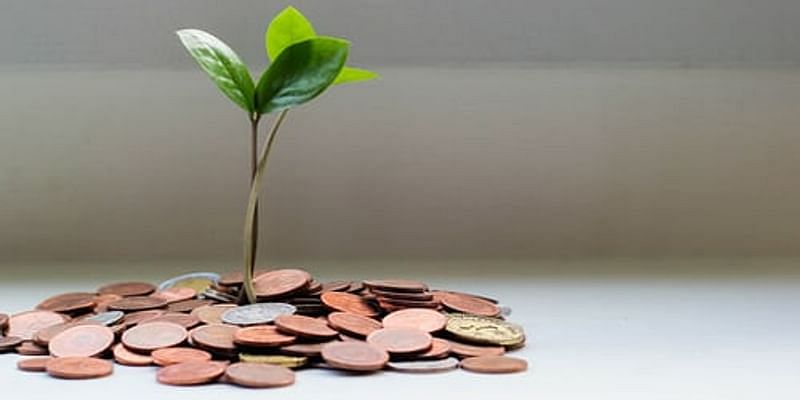With the resurgence of COVID-19 cases posing risks to economic recovery, leading brokerages have downgraded India’s GDP growth projections for the current fiscal year to as low as 10 percent on local lockdowns threatening fragile recovery.
While Nomura has downgraded projections of economic growth for the fiscal year ending March 2022 to 12.6 percent from 13.5 percent earlier, JP Morgan now projects GDP growth at 11 percent from 13 percent earlier. UBS sees 10 percent GDP growth, down from 11.5 percent earlier and Citi has downgraded growth to 12 percent.
India’s GDP growth had been on the decline even before the pandemic struck earlier last year. From a growth rate of 8.3 percent in FY’17, the GDP expansion had dipped to 6.8 percent and 6.5 percent in the following two years and to 4 percent in 2019-20.
In the Covid-ravaged 2020-21 fiscal (April 2020 to March 2021), the economy is projected to have contracted by up to 8 percent. The low base of FY’21 was seen aiding a double-digit growth rate in the current fiscal before moderating to 6.8 percent in FY’23.
The RBI has projected FY’22 GDP growth at 10.5 percent, while IMF puts it at 12.5 percent. The World Bank sees 2021-22 growth at 10.1 percent.
The pandemic caseload in India has been surging hitting new records every day for the past fortnight. The latest official number puts the daily infections at 2.61 lakh in the past 24 hours and 1,501 deaths.
“India is in the midst of a resurgence of COVID-19 cases, with the daily case count two times the 2020 peak. If the efforts to get the virus under control are successful over the coming weeks, we think recovery should gather steam from Q2 FY’22 onward,” UBS said revising its FY’22 real GDP growth forecast to 10 percent year-on-year (previously 11.5 percent).

UBS expected current mobility restrictions to remain in place until end-May and then be lifted, and assume activity is largely back to normal by end-June. “Even as these measures are likely to dampen economic activity, we think the impact will be much lower than in 2020, as containment measures are quite targeted and households and businesses have adjusted to the ‘new normal’.”
In its alternate risk scenario, where disruptions could last longer, there is a risk India’s real GDP could slow by a much larger magnitude, to 3-5 percent in FY22, it said.
Citi Research said while restrictions are much less stringent compared to last year, they are rising as Covid cases continue to mount.
“Covid cases are concentrated around economically important states like Maharashtra, Gujarat, and Delhi. Accounting for both the restriction and sentiment channel, we have revised down our FY’22 real GDP forecast to 12 percent year-on-year (vs 12.5 percent earlier). Downward revisions are led more by services and private consumption than industry,” it said.
If the Covid situation is not brought under control then there could be a period of multiple growth revisions like in last year, it said.
Stating that it sees a ‘W’ shaped recovery and not ‘V’ shaped, Citi said Q1 FY’22 real GDP growth is seen 28 percent.
Credit Suisse said daily new cases are double of the last peak in September 2020.
“The spike in active cases across most districts (is) causing panic and shortages,” it said adding the rapid spread means it will be less protracted too.
Unlike the stringent nationwide lockdown imposed last year to contain the spread of coronavirus, “lockdowns are likely to be localised, short-lived, and less stringent than last year,” it said.
Stating that Maharashtra lockdown is an aberration, Credit Suisee said it would shut 15 percent of GDP for 15 days.
Other states are using night curfews, limits on large gatherings and weekend restrictions.
“If GDP restrictions are 5 percent ex-Maharashtra till end-May, and Maharashtra lifts by end-April, FY22 impact will be 1 percent,” it said. “Macro supportive, business momentum unlikely to hurt if restrictions are short-lived.”
Wall Street brokerage Bank of America (BofA) Securities said the spike in coronavirus cases poses a risk to economic recovery, and the GDP is unlikely to achieve the earlier projected 3 percent growth for March quarter 2020-21.
Stating that a month-long nationwide lockdown can shave off 100-200 basis points off the GDP, it said growth is still weak, amplified by the steep fall in key economic activity indicators and the anaemic loan growth, and the surging pandemic cases are only increasing the worries on the growth front.
Fitch Solutions said there is a third wave of Covid-19 infections creeping into India.
After some success in curbing the virus considerably, India’s economy had returned to functioning normally by the second half of 2020. “However, over recent weeks, the virus has started spreading rapidly, partly due to complacency on the social distancing measures and mask-wearing policies,” it said.
“India lags far behind in immunisations per capita. Unprecedented crisis has highlighted the need to increase investment in the healthcare sector in the country.”










